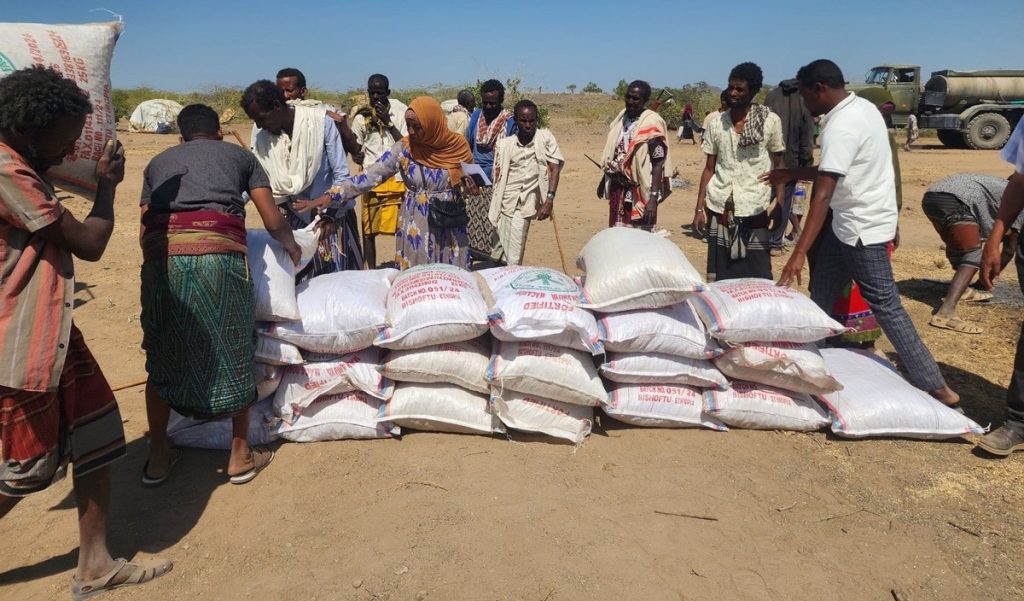Recently, the Ethiopian Disaster Risk Management Commission announced that it is providing humanitarian assistance to those displaced by the earthquake in the Afar region (Photo: EBC)
Addis Abeba – As seismic activity continues across parts of Afar and Oromia, the United Nations Office for the Coordination of Humanitarian Affairs (OCHA) revealed that “two individuals have been reported to be seriously injured.” According to the UN agency, the earthquakes have caused extensive damage to infrastructure, including homes, health centers, schools, and roads.
In the latest update prepared by UNOCHA with the support and collaboration of IASC cluster coordinators and partners, the organization stated that “A comprehensive humanitarian response is underway, but significant gaps remain.” The report highlighted that government-led Zonal Incident Command Posts (ICP) have been established in Awash, Afar region, and Metehara, Oromia region, with OCHA and Cluster staff embedded to enhance coordination. Additionally, a Multi-Sector Initial Rapid Assessment (MIRA) was launched on 8 January to provide a “clearer understanding” of the affected population, as well as the scale of loss and damage.
Last week, Addis Standard reported that over 58,000 individuals, including 4,000 Kesem Sugar Factory workers, have sought refuge in temporary shelters and are receiving humanitarian assistance after being displaced by recurrent earthquakes in Dulesa and Awash Fentale districts of Gabi Rasu Zone.
OCHA’s latest update noted that the Disaster Risk Management Commission (DRMC) has sent 16 trucks of food supplies to displacement sites. Additional support is anticipated from the World Food Programme (WFP) in collaboration with World Vision Ethiopia.
“In the Afar evacuation areas, which host the highest number of displaced people, food assistance has reached 6,780 households,” OCHA reported. “However, 2,250 households remain without any support.”
Seismic activity has been particularly intense in the Awash and Dulecha districts of Afar and Oromia. Between 8 and 10 January, 18 earthquakes, ranging from 4.4 to 5.3 in magnitude, were recorded, bringing the total number of tremors in the past week to approximately 50. The strongest, a magnitude 5.8, occurred on 4 January at a depth of 10 kilometers near the Dofen Mountains. Its impact was felt as far as the capital, Addis Abeba.
According to the UN, the tremors primarily originate from the Fentale volcanic complex, located in the Main Ethiopian Rift, which has experienced gradual ground deformation since 2021.
Recently, Addis Standard reported that frequent earthquakes in Awash Fentale have led to the collapse of over 30 homes, displacing thousands who have sought shelter in nearby areas. AS





